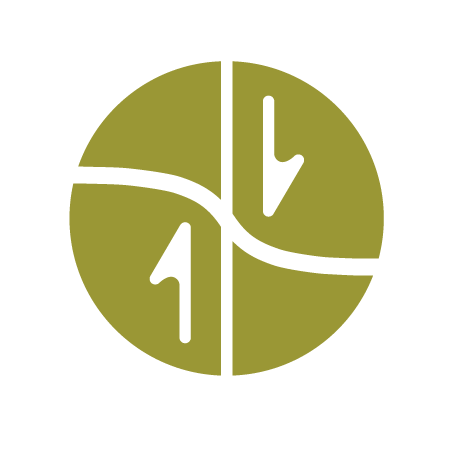- Version 4
- by (unknown)
- Version 5
- by (unknown)
Deletions or items before changed
Additions or items after changed
| 1 | == !PyLith Development Plans, Jun 2016 == | |||
|---|---|---|---|---|
| 2 | ||||
| 3 | Priorities for !PyLith software development, such as new features and enhancements. This a draft for community comment (Jun 24, 2016). | |||
| 4 | ||||
| 5 | This plan attempts to balance meeting short-term objectives of delivering high priority, new features and meeting long-term objectives of extending the code to solve a broader range of scientific problems. | |||
| 6 | ||||
| 7 | Current development is slower than in the past because Brad Aagaard (who is not funded by CIG) is unable to devote as much time to !PyLith development due to a substantial increase of other obligations. | |||
| 8 | ||||
| 9 | === Version 3.0 (Spring 2017) === | |||
| 10 | ||||
| 11 | # Multiphysics [[Image(expert.png, 40px)]] 15% | |||
| 12 | * Setup modular approach for specifying governing equations and computing residuals and Jacobians. [[Image(expert.png, 40px)]] | |||
| 13 | * Incompressible elasticity via a pressure field [[Image(intermediate.png, 25px)]] | |||
| 14 | * Elasticity + heat flow [[Image(difficult.png, 25px)]] | |||
| 15 | * Poroelasticity [[Image(difficult.png, 25px)]] | |||
| 16 | # Higher order basis functions [[Image(difficult.png, 25px)]] 20% | |||
| 17 | * Allow user to select order of basis functions independent of the mesh (which defines the geometry). This permits higher resolution for a given mesh. | |||
| 18 | # Switch to using PETSc time-stepping (TS) algorithms. [[Image(intermediate.png, 25px)]] 25% | |||
| 19 | * Replace simple Python-based time-stepping implementations with PETSc time-stepping algorithms that provide support for higher order discretization in time and real adaptive time stepping. | |||
| 20 | # Improve fault formulation for spontaneous rupture [[Image(intermediate.png, 25px)]] 10% | |||
| 21 | * Removes inner solve associated with updating Lagrange multipliers. This will significantly accelerate the nonlinear solve. | |||
| 22 | # Add Drucker-Prager with relaxation to yield surface bulk rheology [[Image(intermediate.png, 25px)]] 0% | |||
| 23 | ||||
| 24 | === Version 3.1 (late 2017) === | |||
| 25 | ||||
| 26 | # Reorganize top-level code to allow different startup cases [[Image(intermediate.png, 25px)]] 0% | |||
| 27 | * Elastic prestep | |||
| 28 | * User-specified initial solution | |||
| 29 | * Checkpoint via special spatial database? | |||
| 30 | * Reorganization for time-dependent Green's functions and adjoints | |||
| 31 | # Multilevel nonlinear solve | |||
| 32 | # Radial basis functions for spatial databases [[Image(intermediate.png, 25px)]] 0% | |||
| 33 | ||||
| 34 | === Version 4.0 (TBD) === | |||
| 35 | ||||
| 36 | # Earthquake cycle modeling [[Image(difficult.png, 25px)]] | |||
| 37 | * Same mesh for dynamic and quasi-static parts (dynamic -> quasi-static, quasi-static -> dynamic, complete cycle) | |||
| 38 | # Create strain hardening/softening 2-D and 3-D Drucker-Prager elastoplastic models.[[Image(intermediate.png, 25px)]] | |||
| 39 | # Moment tensor point sources via equivalent body forces [[Image(difficult.png, 25px)]] 5% | |||
| 40 | * Moment tensor point sources provide a mesh independent deformation source that is better suited for Green's function calculations than slip on a fault surface via cohesive cells. | |||
| 41 | ||||
| 42 | === Features for Future Releases === | |||
| 43 | ||||
| 44 | ==== Major features ==== | |||
| 45 | # Earthquake Cycle Modeling | |||
| 46 | * Different meshes for dynamic and quasi-static parts [[Image(expert.png, 40px)]] | |||
| 47 | * Requires interpolation of fields between different meshes/discretizations and may require extrapolation of solutions when quasi-static problems span a larger domain than the dynamic problems. | |||
| 48 | # Data assimilation | |||
| 49 | * Use flexibility of multiphysics implementation to support inclusion of data assimilation [[Image(expert.png, 40px)]] | |||
| 50 | ||||
| 51 | ==== Minor features ==== | |||
| 52 | # GUI interface for specifying parameters [[Image(difficult.png, 25px)]] 25% | |||
| 53 | # Begin implementation of data assimilation capabilities via adjoint equation. | |||
| 54 | # Combined prescribed slip / spontaneous rupture fault condition [[Image(difficult.png, 25px)]] | |||
| 55 | * Use fault constitutive model to control slip on fault except during episodes of prescribed slip. Need some way to describe when to turn on/off prescribed slip. | |||
| 56 | - | # Use threading to accelerate integrations on multi-core machines. [[Image(difficult.png, 25px)]] |
+ | # Use threading to accelerate integrations on multi-core machines. [[Image(difficult.png, 25px)]]
|
| 57 | + | ----
|
||
| 58 | + | ==== difficulty rating system ====
|
||
| 59 | + | |||
| 60 | + | ||[[Image(intermediate.png, 25px)]] intermediate
|
||
| 61 | + | |||
| 62 | + | ||[[Image(difficult.png, 25px)]] difficult
|
||
| 63 | + | |||
| 64 | + | ||[[Image(expert.png, 40px)]] expert
|
||
| 65 | + | |||
| 66 | + | ||
|
||
| 67 | + | |||
| 68 | + | ''based on the ski trail rating system'' |
||

